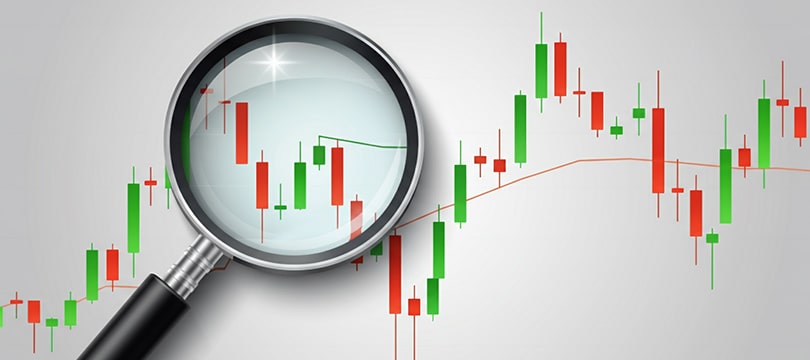Welcome to the ultimate guide to Forex trading for beginners in 2024. If you're looking to enter the world of currency trading, you've come to the right place. In this article, we'll explore everything you need to know to get started, from the basics of Forex to essential terms, trading strategies, common mistakes to avoid, and more. You'll also discover how to open a demo account with the best recommended Forex brokers. Keep reading to find out how you can start trading Forex and become a successful trader in 2024.
1. Introduction to Forex Trading
Forex, or the foreign exchange market, is the largest and most liquid financial market in the world, with a daily trading volume exceeding $6 trillion. This market offers many opportunities for profit, but it is also extremely volatile and complex. To succeed in Forex trading, it is essential to have a solid understanding of market dynamics and a well-defined strategy.
Forex trading involves buying and selling currencies. For example, if you think the euro will increase in value against the US dollar, you would buy the EUR/USD pair. If instead, you think the dollar will strengthen, you would sell EUR/USD.
2. Basic Terminology and Concepts
Before starting to trade, it's crucial to familiarize yourself with some basic terms and concepts.
- Pip: The smallest possible variation in the price of a currency. For example, if the EUR/USD exchange rate moves from 1.1050 to 1.1051, it's a change of 1 pip. Pips are fundamental for calculating profits and losses.
- Leverage: Allows traders to control a larger position with a relatively small amount of money. For example, a leverage of 1:100 means that with $1,000, you can control a position worth $100,000. However, leverage amplifies both gains and losses, so it's important to use it cautiously.
- Spread: The difference between the buy price (ask) and the sell price (bid) of a currency. For example, if the bid price for EUR/USD is 1.1050 and the ask price is 1.1052, the spread is 2 pips. A tighter spread generally indicates a more liquid market.
- Margin: The amount of money required to maintain an open position. Margin is often expressed as a percentage of the position size. For example, a 1% margin means you must have at least $1,000 in your account to open a $100,000 position.
- Lot: A lot represents a standard amount of currency that is traded in the Forex market. There are three lot sizes: standard (100,000 base currency units), mini (10,000 units), and micro (1,000 units). The lot size affects the pip size, which in turn affects profits and losses.
3. Opening a Trading Account
To start trading, you need to open an account with a Forex broker. For beginners, it's recommended to open a demo account with one of the best recommended Forex brokers. This allows you to practice without risking real money. Visit our page on the best Forex brokers for trading to find the broker that's right for you and follow these general steps:
- Visit the website of your chosen broker.
- Start the registration process: Look for the option to open a demo account.
- Fill out the registration form: Enter your personal information, such as name, email, and phone number.
- Confirm your email address: You will receive a confirmation email. Click on the link to verify your account.
- Access the platform: Once registration is complete, you can log in to the trading platform and start practicing with virtual trading.
A demo account allows you to familiarize yourself with the trading platform, test your strategies, and understand how the Forex market works without risking real money.
4. Trading Strategies for Beginners
Here are some trading strategies that can be useful for beginners:
- Trend Trading: This strategy involves following the main direction of the market. If the market is in an uptrend, you look to buy; if it's in a downtrend, you look to sell. Example: Use moving averages to identify the direction of the trend. For instance, a 50-day moving average above a 200-day moving average could indicate an uptrend.
- Swing Trading: Take advantage of price swings within a trend. Swing traders seek to profit from price reversals. Example: Use the RSI indicator to identify overbought or oversold areas. An RSI above 70 may indicate an overbought area, while below 30 may indicate an oversold area.
- Scalping: Make small trades over short time periods to take advantage of small price movements. This strategy requires fast order execution and tight risk management. Example: Use 1-minute or 5-minute charts and look for small price movements. Scalpers might make dozens of trades per day.
- Carry Trade: Exploit differences in interest rates between two currencies. Buy a currency with a high interest rate and sell one with a low interest rate. Example: Buy AUD/JPY if Australia has a higher interest rate compared to Japan. This strategy works best in a stable market environment.
5. Why Most Traders Lose in the Forex Market
Many beginner traders enter the Forex market with high hopes of making quick profits, but the reality is that most of them end up losing money. Here are some of the main reasons:
- Lack of Education and Knowledge: Many traders start without an adequate understanding of the market and trading strategies. This leads to poorly informed decisions and losses.
- Underestimating Risk Management: Not using risk management tools like stop losses or limiting leverage can lead to significant losses. Risk management is crucial for protecting capital.
- Emotions and Psychology: Fear and greed are powerful emotions that can negatively influence trading decisions. Discipline and self-control are essential for long-term success.
- Lack of a Trading Plan: Without a clear trading plan, it's easy to make impulsive trades based on feelings rather than well-defined analysis and strategies.
- Overtrading: Trying to make too many trades in a short period can lead to mistakes and losses. It's important to be selective and trade only when there are high-quality opportunities.
- Unrealistic Expectations: Many traders enter the market with unrealistic expectations of quick and high profits. Forex trading requires time, patience, and a significant learning curve.
6. Useful Resources and Tools
To improve your Forex trading skills, here are some useful resources and tools:
- Books:
- "Operational Trading on Forex" by Giacomo Probo: A book that covers multiple aspects of trading, from basics to advanced strategies.
- "Secrets of Short-Term Trading" by Larry Williams: A comprehensive guide for those who want to learn to trade in the stock market with a focus on the short term.
- Websites:
- Investopedia: Offers detailed articles, tutorials, and glossaries on Forex trading.
- BabyPips: An educational site dedicated to beginners in the currency market, with structured Forex courses and discussion forums.
- Technical Analysis Software:
- MetaTrader 4 (MT4): One of the most popular trading platforms, with numerous technical analysis tools.
- TradingView: Offers interactive charts and an active community of traders sharing trading ideas.
- Forums and Communities:
- Reddit (r/Forex): An active community of traders where you can find advice, analysis, and discussions.
- Forex Factory: A forum with sections dedicated to various trading strategies, market analysis, and economic news.
7. Conclusion and Final Tips
Forex trading can be a profitable opportunity if approached with the right preparation and discipline. Start with a demo account with one of the best Forex brokers to practice risk-free, study the basics, and develop a solid strategy. Remember to always manage risk and not let emotions guide you. Continue to educate yourself and improve your skills. Happy trading!




